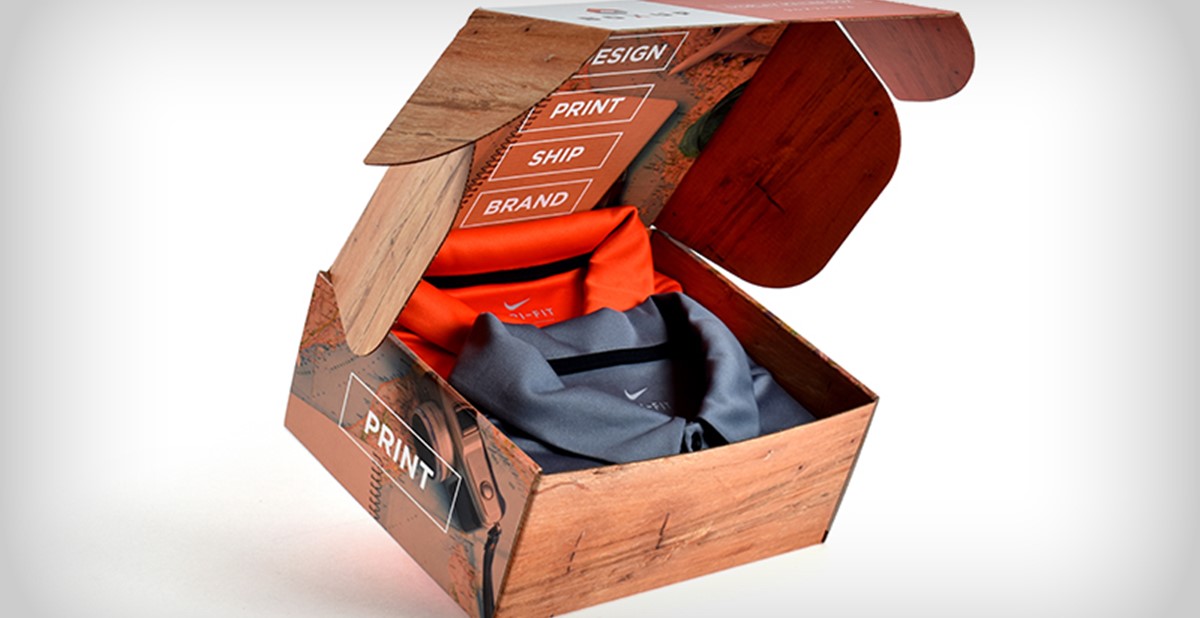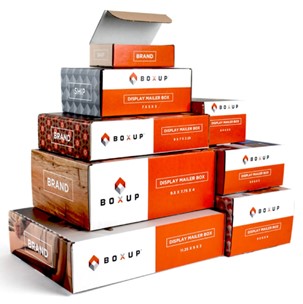'Unboxing' The Gifting Experience

In the early days of promotional products and corporate gifting, much of the emphasis surrounding the first impression and ensuing experience of receiving a custom-branded product was focused on the product itself, and much less on its packaging. Now, product packaging has become precious branding real estate for businesses both large and small to share with customers and recipients more about the personality, mission and vision of the brand, and also more about their unique gift.
When recipients anticipate receiving a gift, kit, subscription box or product package in the mail today, they also anticipate having a gift-like experience, says Curt Stephens, CEO of BoxUp, a Terre Haute, Indiana, supplier of custom packaging which operates a web-based design and ecommerce platform with a focus on direct-to-consumer packaging for clients of all sizes. The gift-like experience, which is crafted by the correct choice in product coupled with pristine presentation and on-brand packaging, further works to solidify brand recall and recipients’ relationship with the brand moving forward.
“In an ecommerce world, a lot of the opportunity to establish a relationship with a customer is based on this first sort of encounter that the customer has with your product; this first impression, so to speak,” says Stephens. “There’s a reason why when you look out on your front porch and see [boxes from] all the big brands, they have packaging that’s custom-printed to promote their brand because they know that’s a real opportunity to create brand loyalty, to create relationships with the customer and to build around their brand messaging. All that real estate that’s on the interior and exterior of the product is important, and it’s valuable real estate if you use it to promote your relationship with your brand.”
He adds, “In the old days, [customers] were going into a retail environment and having a salesperson describe all the benefits and features of this product that they’re then going to put into their shopping cart and leave with in a physical sense. All that interaction that takes place between the salesperson and the customer has been replaced in an online experience. When you have the product being delivered to your house, how do you establish that relationship?”
BoxUp operates a digital platform that allows the supplier’s clients to custom design their own packaging online and eliminates the need for printing plates, salvaging costs. But from its inception in 2016, the supplier has focused on the goal to service businesses of all sizes, from mom-and-pop stores with an order as small as 12 boxes (BoxUp’s minimum) to large corporations with need for several thousand. The business was founded by Stephens and his business partner Ward Hubbard, who is co-owner and chief financial officer of BoxUp, which operates under Wabash Digital. After 10 months of development, BoxUp was launched at the inaugural 2016 Etsy Up conference in Brooklyn, New York, a two-day gathering that attracts thousands of makers and entrepreneurs who use the Etsy online marketplace to conduct business, and who could benefit from BoxUp’s business model. BoxUp served as a preferred vendor at the event, and Stephens sat in on a panel discussion to discuss the design of the platform, while Eric Kass, BoxUp’s brand designer, gave a talk on brand identity.
 “We wanted to use technology in the printing industry to change how we related to customers and how we could serve an area of the marketplace that we felt was very underserved, and that was customers who wanted custom-printed boxes, and those who didn’t find it affordable to do in the traditional way,” says Stephens. Their vision for BoxUp early on and still today, is “to democratize printed boxes,” he says. “We spent most of our career saying ‘no’ to customers who would describe to us that they wanted this beautifully printed photo, and then they’d say, ‘I want a lot of them. I want 250,’ and with everything they described, it would be too expensive.” He adds, “What we wanted to do is make beautifully printed boxes accessible at a much smaller threshold of volume at a much more competitive price than it’s been done in the past.”
“We wanted to use technology in the printing industry to change how we related to customers and how we could serve an area of the marketplace that we felt was very underserved, and that was customers who wanted custom-printed boxes, and those who didn’t find it affordable to do in the traditional way,” says Stephens. Their vision for BoxUp early on and still today, is “to democratize printed boxes,” he says. “We spent most of our career saying ‘no’ to customers who would describe to us that they wanted this beautifully printed photo, and then they’d say, ‘I want a lot of them. I want 250,’ and with everything they described, it would be too expensive.” He adds, “What we wanted to do is make beautifully printed boxes accessible at a much smaller threshold of volume at a much more competitive price than it’s been done in the past.”
Stephens and Hubbard both share a background of working in the packaging industry, and a long history of working with each other and being members of the Terre Haute community. They spent more than 30 years working together, first at Wabash Fibre Box Company, which merged with International Paper in the late ’90s, then at Wabash Valley Packaging in Terre Haute, a corrugated packaging company where Hubbard was president and Stephens was vice president. Stephens describes the company as “very traditional” in terms of corrugated packaging, and says that for many years, they “noodled” with the idea of “how digital printing will come into play for our industry, and how it might help us serve those customers we already have and customers we’ve never been able to serve in the past.”
Today, BoxUp is housed in the former Wabash Valley Packaging building in Terre Haute, which is Hubbard’s hometown, and which Stephens has also called home for more than three decades. With a prime location in central Indiana, BoxUp can reach 80 percent of the contiguous U.S. in three days’ time, Stephens says, and they’re looking to expand to other geographic locations in the future. The supplier, which has several thousand customers and a team just shy of 50, has a proprietary printing process with CMYK colors which permits clients to use any hue imaginable, and only UV-cured digital inks are used, which won’t rewet if they’re caught in the rain and won’t stain the shirts of those transporting the boxes. And in addition to the 100-percent customization, BoxUp’s packaging is 100-percent recyclable. Made from e-flute and b-flute corrugated cardboard with a white paper interior and exterior, each package is comprised of at least 50-percent recycled fibers and is sturdy enough to be able to ship on its own without being packed in another box.
Moving forward, Stephens says the BoxUp team is dedicated to sharpening its customer service, and to continue growing in the direction of its customers’ needs. “Our focus is to maintain the high standards of quality and service that got us to this point, and we’re going to invest significantly to allow for capacity to meet this ever-increasing demand. We’re excited for the future. It’s all about growing, and growing in a way that’s sustainable for us, continues to meet customer demand and continues to please them and exceed their expectations in terms of the actual boxes we’re delivering to them.”
––––––––––––––––––––––––––––––––––––––––––––––––––––––––––––––––––––––––––
Danielle Renda is associate editor of PPB.

